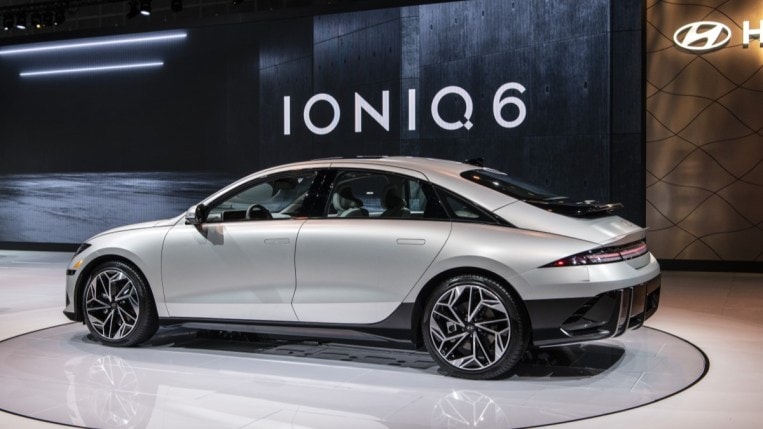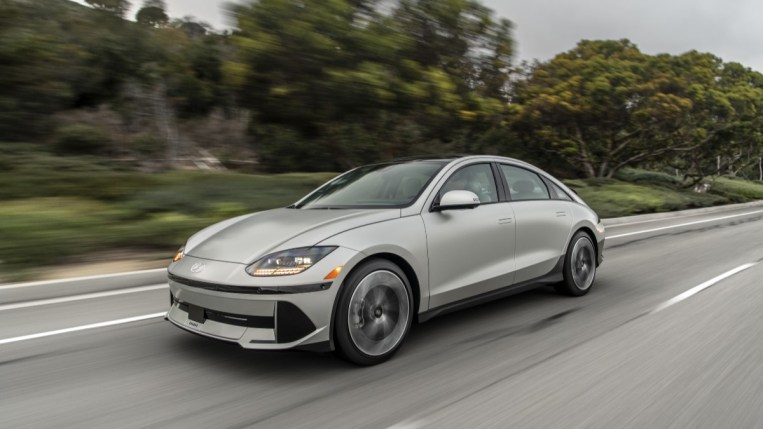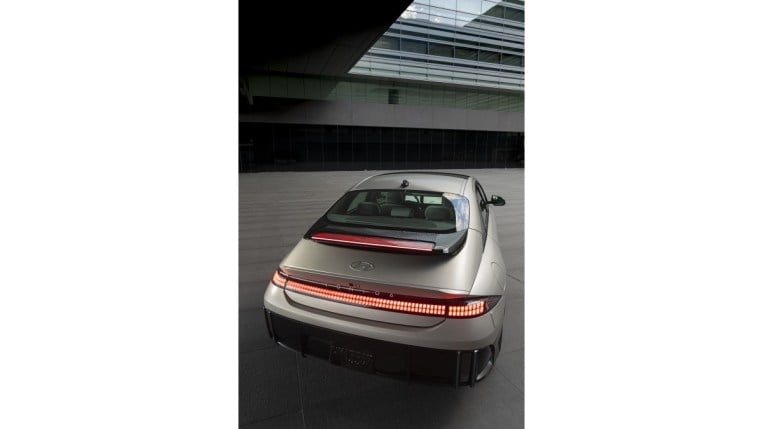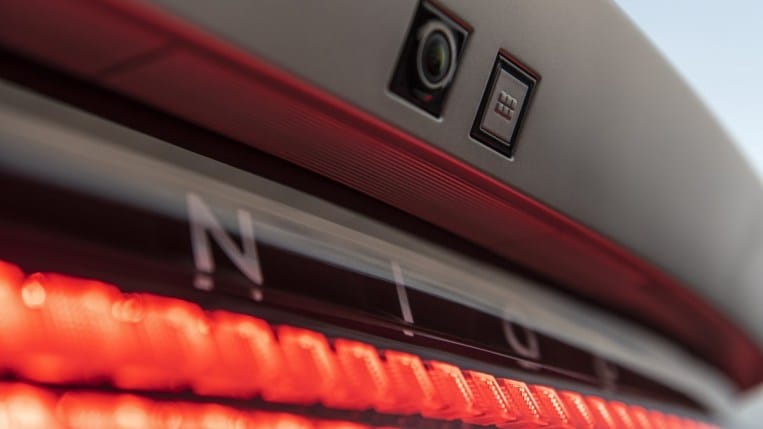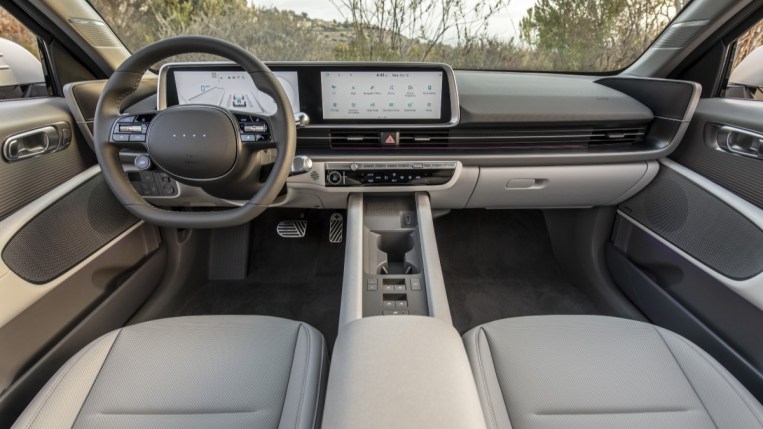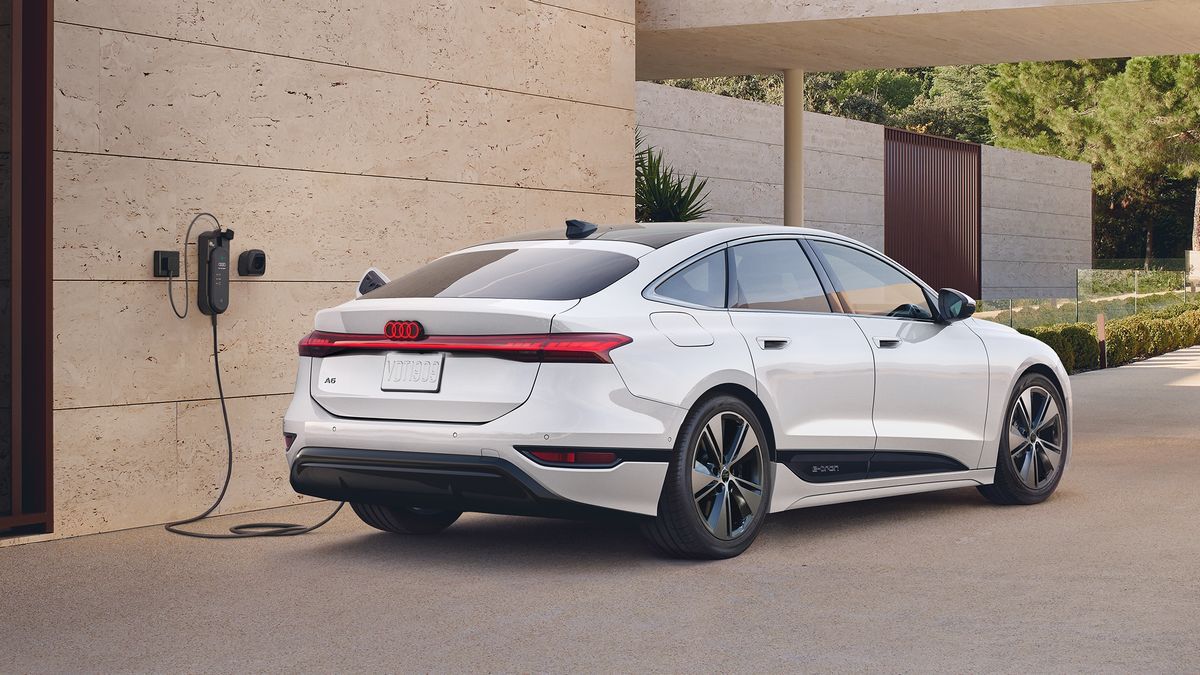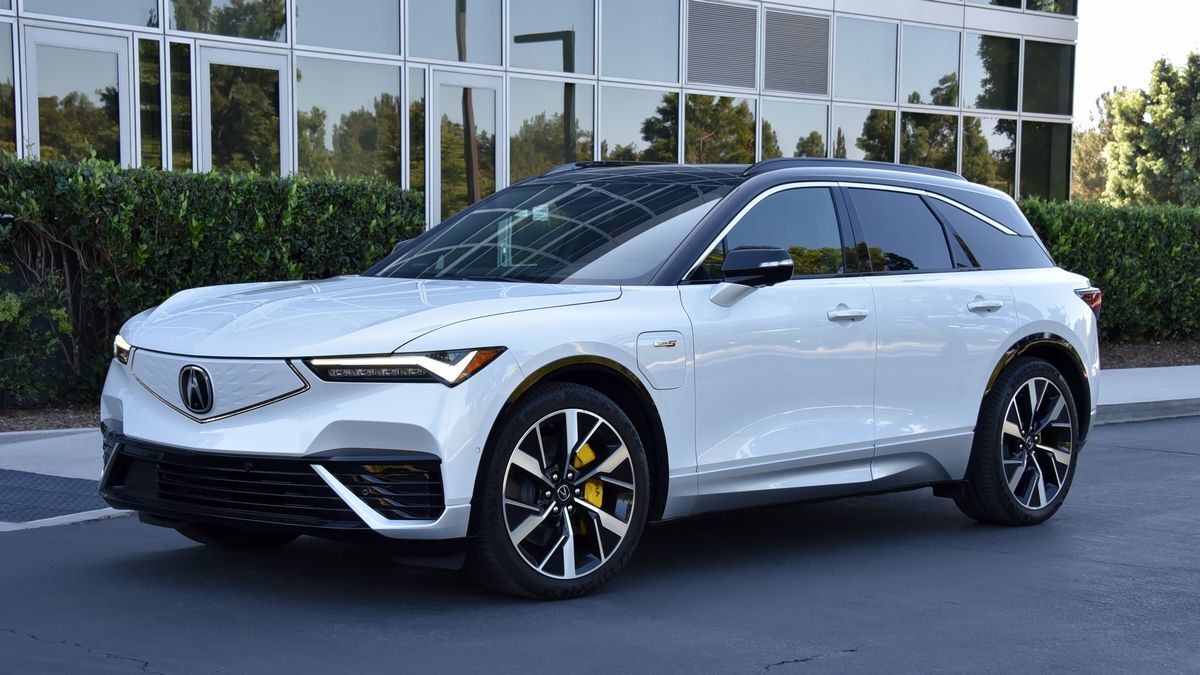- We expect the Ioniq 6 to cost in the low $40,000 range, but Hyundai has given no hints as to pricing.
- The Ioniq 6 will be offered with three powertrains, one of which has a 340-mile range between charges.
- It will be available next spring.
Hyundai’s next electric car will be a stunning, curvaceous sedan with a range of up to 340 miles on a charge. The company officially revealed the 2023 Hyundai Ioniq 6 at this week’s Los Angeles Auto Show.
That makes the distinctive, swoopy car sound brand new. But you may have seen pictures before. Hyundai has been rolling the midsize sedan out for months, with reveal event after reveal event. Our Micah Muzio has even been to Korea to drive it.
That was a global introduction of the car. But automakers alter cars to fit the laws and tastes of different markets. This week’s event showed off the Ioniq 6 we’ll get in the U.S. when it goes on sale next spring.
Price Still a Mystery
Hyundai has revealed everything but the price, which has been difficult to predict. Most electric vehicles (EVs) released by mainstream automakers this year have carried price tags in the mid-$40,000 range.
They’re starting to come down — Chevrolet has planned one with a $30,000 price tag. But, because Hyundai builds its electric cars outside North America, they’re not eligible for the revamped $7,500 federal EV tax incentive. That could force Hyundai to lower the price, if it can, to stay competitive with U.S.-built cars.
The company is building an EV factory in Georgia but hasn’t said whether it will make the Ioniq 6.
Three Powertrains, Three Range Options
The headline-grabbing number is the range. Next spring, you’ll be able to buy an Ioniq 6 with a range of up to 340 miles.
They won’t all get that number. Hyundai will offer the car with a choice of three powertrains, and buyers can trade range for power.
The discount model will use a single motor on the rear axle, getting 149 horsepower and 258 lb-ft of torque. It has a smaller 53.0 kilowatt-hour (kWh) battery pack, and though Hyundai revealed range numbers for every other Ioniq 6, it’s keeping this figure quiet for now.
A step up gets you 225 horsepower, which is also from a single, rear-mounted motor. It uses a 77.4 kWh battery pack and gets that headline range — 340 miles on a charge. That’s longer than any Tesla Model 3 except for the Long Range model, which Tesla advertises but doesn’t currently build. The longest-range Model 3 you can order today, the Model 3 Performance, comes in at 315 miles.
A higher-powered model uses a two-motor, all-wheel-drive setup for 320 horsepower and a range of 310 miles. Hyundai says that one can get from 0-60 mph in “less than five seconds” — a figure only sports cars could claim not long ago.
The company says the Ioniq 6 can charge from 10% to 80% of its battery in just 18 minutes when connected to a Level 3 DC fast charger. However, those chargers are relatively rare. In real-world numbers, it will take about 7 hours to fully charge on a Level 2 home charger.
Electric vehicles are still a relatively new technology, and automakers are still working to make them more efficient. Hyundai has a new trick we haven’t seen before with the Ioniq 6. If you use its navigation system to find charging stations, it warms the battery to the optimum temperature for fast charging so that you’ll get the most out of that charger when you get there.
That navigation system, Hyundai says, can plan longer routes to take advantage of chargers and even track which chargers along your path are out of order (a distressingly common problem). We’ve asked for more details on how that function works.
Distinctive, Curvy Looks Have a Function
The Ioniq 6 looks like a form exercise with its unusually slippery shape. But that shape has a function beyond turning curious heads in traffic.
Hyundai says it has a drag coefficient of 0.22 — a number we typically associate with exotic supercars. That’s part of how the Ioniq 6 gets more range out of roughly the same mechanical bits as its chunkier Ioniq 5 cousin.
Hyundai representatives can’t help but point out that the number is 0.21 outside the U.S. In other markets, tiny cameras take the place of side mirrors. American regulations require actual side mirrors.
The other distinguishing feature of the exterior is the lights. Hyundai says the car has more than 700 “Parametric Pixels” inside and out. On the outside, the little squares make up the car’s lighting. Headlamps, taillamps, indicators — they’re all composed of many tiny boxes like an 8-bit graphic. It contrasts beautifully with the car’s unusual curves and lends a funky retro-future feel.
This is what we imagined cars would look like in the future when we all had Atari game consoles and a Walkman with orange foam earpads.
Clean, Simple Cabin
Inside, the design language is sleek and simple. A pair of identical screens — 12.3 inches and landscape-mounted — sit side-by-side, serving as the driver’s instrument panel and the center infotainment screen. Window switches are in the center console (Hyundai says that maximizes storage in the doors. Perhaps, but it also uses less wiring and makes manufacturing easier).
That lighting theme carries over to the inside. Hyundai says the interior ambient lights can be set to 64 different colors.
Hyundai says the speakers will produce “virtual propulsion sound called electric-Active Sound Design or e-ASD” to “provide unique driving sounds inside the cabin and the ability to set the volume.” We’ve seen electric car designers use everything from engine-like noises to music composed by Hans Zimmer, so we can’t wait to see what Hyundai thinks an electric car should sound like.
